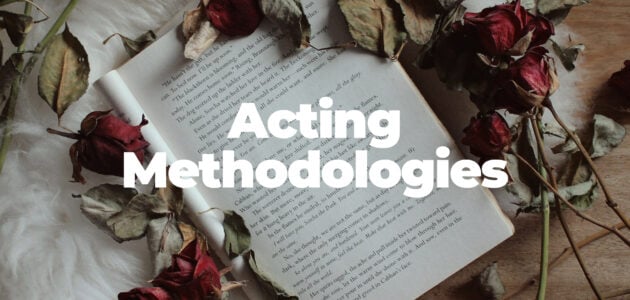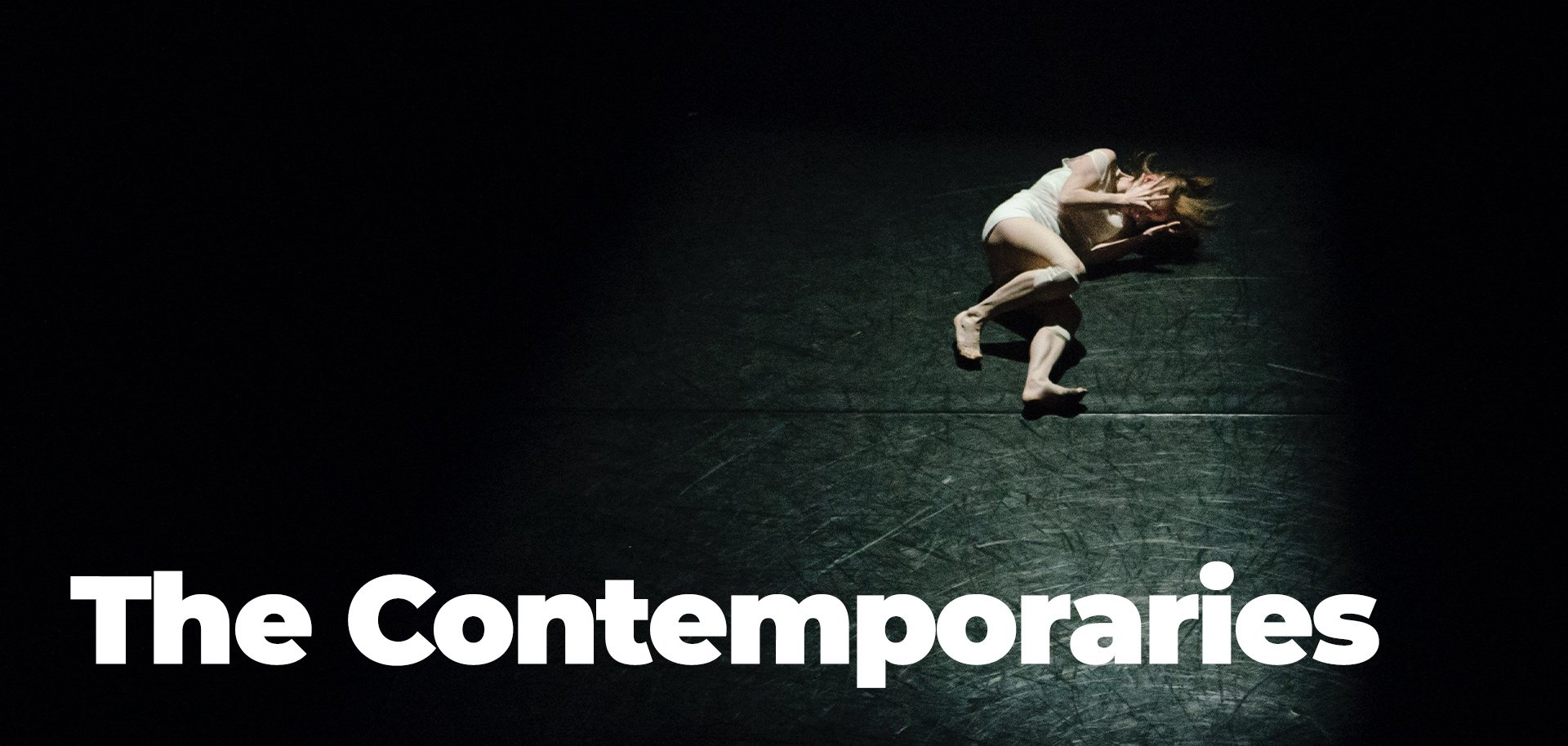
Acting Methods: Acting Techniques for Actors
Regardless of what stage you’re at with your acting journey, it’s quite possible that you’re not aware of the long history of acting methodologies that have evolved to bring us to where acting is today. Or perhaps you’ve only studied under more modern methodologies and are looking to brush up on your theatre history. Or, perhaps you’re looking to expand your knowledge of acting methodologies as a whole and apply some of these techniques to your next audition. This overview should paint a picture of what’s been going on in acting methodology over the past couple thousand years up until the 21st Century.
CONTENTS:
The Origins of Acting
- Ancient Greek Drama
- Aristotle’s Poetics
- Sanskrit Theatre
- Commedia Dell’arte
- Chinese Opera of the Manchu Rule
- German Romanticism and Naturalism
Traditional Acting Methodologies
Contemporary Acting Methods

The Origins of Acting
Let’s start at the very beginning – sometimes it can be interesting to deep dive into the history of acting as a profession, you never know what you might learn!
Ancient Greek Drama
An excellent place to begin with a history of drama and acting is in Greece, specifically in Athens. Greek Drama was a flourishing part of Greek culture ongoing from 600BC – first through the performance of tragedies at religious festivals, and later with the genre of comedy plays which would spread across the Mediterranean. Some believe the origin of tragedy plays is from poetry and the oral tradition of storytelling being passed between generations. Other historians have indicated a strong link to the rituals performed in worship of Dionysos where goats would be sacrificed during the singing of song and masks would also be donned. From these possible origins, Greek theatre emerged whereby actors would take on a number of roles and use masks and strong physical gestures to differentiate characters. Key Greek playwrights from this era that developed the form of theatre and acting include Aeschylus, Euripides and Sophocles.
Aristotle’s Poetics
Aristotle wrote Poetics in about 335 BC, which has been considered the earliest surviving work on dramatic theory. The surviving parts of the work discuss what tragedy and epic poetry should look like, and apparently the work also detailed comedy, however, this written work has been lost. He highlights the way in which poetry represents objects and events in the world, drawing people in through imitation, rather than simply presenting ideas. He argued that tragedy was the most advanced way to deal with big ideas, while comedy was the most effective way to deal with more basic aspects of life.
Sanskrit Theatre
Sanskrit theatre has been considered the origin of theatre in India, possibly emerging from 1500BC and flourishing in India between the 1st and 10th centuries. The text A Treatise on Theatre, attributed to the author Bharata Muni, is the most complete dramaturgical work in the ancient world. The work contains approaches to both ‘realistic’ and ‘conventional’ styles to be performed by people trained in dance, music and recitation to educate and entertain audiences. Sanskrit theatre uses stock characters to tell stories including the hero, villain and clown, and some actors specialised in a certain type of character.
Commedia Dell’arte
In Italy from the 1560s, troupes of actors would tour across Europe performing loose story frameworks within the actors would improvise. Actors took on stock characters from three categories – lovers, masters and servants. These characters were represented by the donning of masks and carried specific recognisable tropes and devices to tell comedic stories.
Chinese Opera of the Manchu Rule
Classic theatre in China is referred to as Opera due to its use of arias and recitatives. Operas popular today in contemporary China emerged from practices commonplace under the Manchu rule of the 19th century. Operas take place with an orchestra in front of an audience eating and chatting throughout the performance. Actors only fully ‘perform’ when they are at the centre of the stage – otherwise when standing to the side of the stage they drink tea and adjust costumes in view of the audience. This approach to acting influenced 20th century German practitioner Bertolt Brecht, who noted that Chinese actors give a performance which is mechanistic rather than empathic, and in contrast to Western actors, they keep a distance between themselves, their character and the spectator.
German Romanticism and Naturalism
Wagner was a key Romanticist who aimed to utilise human experience to reach absolute truths. He believed that myth could be used so that humans could experience true passion, with music dramas being the ultimate theatrical manifestation of myth.
Saxe-Meiningen was concerned with creating the illusion of reality by attempting to use spectacle and acting in a way that was lifelike and historically accurate. Rather than use a lightweight costume to imitate chainmail, an actor would wear actual chainmail used in the historical period being depicted, which was extremely heavy. Through this accuracy, it was theorised that the actor would have an empathetic response for their character and result in a more naturalistic performance.
These German theatre practitioners took very different approaches to theatre and acting, and yet these figures hold significant responsibility for the establishment of the profession of theatre director. Believing that a production should come about according to the will of one individual who coordinates the preparation for the performance, the role of theatre director emerged from their work.

Traditional Acting Methods
Over the years acting morphed from a means of storytelling, and became a full-blown profession, and a way to make a living. Here are the founding practitioners of “Acting methods” as we know them today. Most actors still study and use these timeless techniques, and more modern practitioners build upon their foundations and have adapted their work to be suitable for both screen and stage.
Konstantin Stanislavski
“Our demands are simple, normal, and therefore they are difficult to satisfy. All we ask is that an actor on the stage live in accordance with natural laws.”
Stanislavski was a hugely influential Russian theatre practitioner who developed a new approach to acting that heavily impacted contemporary acting methodologies. He advocated for a naturalistic approach to acting where the actor inhabits the character, seeking to fully understand the character’s circumstances and personality. Terms such as “given circumstances”, “emotional memory”, “objective” and “super-objective” are drawn from Stanislavski.
The Group Theater
The Group Theater was founded in 1931 in America and was based on Stanislavski’s principles. 3 key members of this group went on to make a lasting impact on acting as we know it today – Stella Adler, Lee Strasberg and Sanford Meisner. These key figures were seeking to create truthfulness in an acting performance and created their own approaches to achieve this.
Stella Adler
“The actor has to develop his body. The actor has to work on his voice. But the most important thing the actor has to work on is his mind.”
Adler advocated for respect for the playwright and emphasised the importance of script analysis. Taking firstly a very detailed approach to examining the given circumstances and character information in the script and then taking an imaginative approach to fill in the gaps and make a character’s world come alive. Adler also encouraged actors to physically inhabit their character, so that by taking on the physicality of the character you could bring that character to life.
For more: Stella Adler Acting Method
Lee Strasberg
“Work for the actor lies essentially in two areas: the ability to consistently create reality and the ability to express that reality.”
Strasberg is responsible for coining the renowned term “Method Acting” where an actor aims to become the character, experiencing and re-experiencing the emotions that exist within the storyline. This is the kind of acting that fascinates the public, especially with the likes of Daniel Day-Lewis inhabiting a character for years before acting in a role, or Jared Leto sending bizarre gifts to his fellow actors on films and living on the streets to become a character. Strasberg utilised the technique of ‘emotional recall’ in which an actor relives a personal emotion or event that is similar to that of their character in order to reach a truthful performance. This was first created by Stanislavski who later moved away from using this technique.
Sanford Meisner
“Act before you think – your instincts are more honest than your thoughts.”
Meisner’s acting philosophy is to “behave truthfully under imaginary circumstances”. He was concerned with the space in between characters and how these characters interact. Using emotional impulse and instinct of the actor, with awareness of the circumstances of the scene, Meisner’s approach aimed to create authenticity and emotional truth in the scene.
For more: Sanford Meisner Acting Method
Michael Chekhov
“Real inspired acting is never DOING, it is always HAPPENING”
Another student of Stanislavski, Chekhov developed a ‘psycho-physical’ approach to acting which focuses on working with impulse, imagination and inner and outer gesture. It is an imaginative approach seeking to experience the truth of the moment by imagining the character’s inner life and also visualising the exchange of energy between characters on stage. This approach is meant to allow actors to overcome merely relating to their character based on their personal experiences, but allow them to go further through the use of their imagination.

Contemporary Acting Methods
And to finish up, some wonderful contemporary acting practitioners who have truly shaped acting, in particular acting for screen, here in the 21st Century.
Ivana Chubbuck
“An actor who merely feels tends to turn his performance inward and does not energize or inspire himself or an audience, whereas watching someone do anything and everything to override pain in an attempt to accomplish an OBJECTIVE puts an audience on the edge of their seats because the outcome becomes alive and unpredictable. “
The Ivana Chubbuck technique consists of 12 steps. 12 steps to structure your breakdown of any scene or script. These 12 tools will show you how to use your personal needs, desires, traumas, pain and dreams to fuel and drive your character. In other words, the Chubbuck technique teaches actors how to WIN.
These tools will create a foundation from which you can present a raw, profound, dynamic and powerful performance.
For more: Ivana Chubbuck Acting Method
Larry Moss
“Everything I’m teaching you about acting has one aim only: to fire you up emotionally and behaviorally so that you can give a vivid, involving, and memorable performance.”
Arguably one of the best acting teachers around today, Larry Moss has made a name for himself as a prolific coach, passionate about the relationship between the audience and the actor and well-known for soliciting emotional breakdowns from his actors in his classroom. Whether or not this is an effective, safe way to train – we will not comment on. Each to their own, and it all depends on the individual actor.
Larry Moss’ technique focuses on three main areas: relaxation, imagination and script analysis. He encourages actors to live their lives and experience the world as creatives and firmly believes there is no distinction between the human in you and the actor in you. They are one and the same. Moss doesn’t believe in “airy-fairy” emotional, wishy-washy acting – he works a lot with intentions (objectives) and deep script analysis. He is recognised for encouraging actors to work on their craft 6 days a week, 8 hours a day. That is what it takes to be a truly great actor, what it takes to be a conduit of the human experience.
Susan Batson
“Need, Public Persona, and Tragic Flaw are the bedrock of a fictional character’s dramatic life, and the foundation of the actor’s own life.”
Batson’s method revolves around three core elements of creating a character: Need, Public Persona and Tragic Flaw. And she teaches that the interplay and conflict between these three are what makes for interesting characters and ultimately, great storytelling. Inspired by the work of Carl Jung, Batson believes that every character creates a PUBLIC PERSONA (a mask) to hide these vulnerabilities and weaknesses and all they represent. Underneath that mask/Public Persona is a deep, fundamental human NEED – which is often the exact opposite of the character’s Public Persona. E.g. a serial dater and a narcissist might underneath actually be feeling unworthy and yearning to be loved. And the third element, THE TRAGIC FLAW: the destructive potential that exists in the relationship between the character’s Need and Public Persona. Batson maintains that using her techniques of discovering: Need, Persona and Tragic Flaw, an actor can make any character reach any audience. The actor who masters these three dimensions of character becomes equipped to create life out of a script. But in order to live and breathe in all 3 dimensions, the actor must confront all 3 dimensions in herself first!
Anthony Meindl
“Listen. React. Feel your feelings rather than thinking them. Give up control. Surrender to the chaos. Admit that you don’t know as much as you think you do and that something greater is trying to reveal itself to you in the moment. Become a channel for flow. Get in the zone. Have more fun. Give zero fucks. Play. Risk. And finally trust that you are enough and have something to contribute as you.”
Sound a bit airy-fairy? That’s because it probably is. Anthony Meindl is no Meisner, Stanislavski or Chubbuck. There’s no 12 step technique and no script breakdown guidelines. It’s about YOU. It’s about what you bring to the work, how to achieve a sense of freedom and flow during the performance and how to connect with an audience in an authentic way. Meindl believes that actors have been falsely taught that there’s some magic formula. There isn’t. It’s just time + patience + practice. Storytelling is incredibly powerful. As actors, we often overthink storytelling and try to do lots of ‘stuff’ to make it interesting. That might take the form of odd facial expressions, strange physical behaviour or stressed line delivery. Sometimes the most fascinating thing to watch is someone simply “being”. And not someone “doing”. Meindl’s technique, and what he teaches at his studio (AMAW) are strategies for LETTING GO of the work, relaxing and accepting the artist within you. It’s pretty empowering stuff!
David Mamet
“This is what acting is. Doing the play for the audience. The rest is just practice. An actor does not need to “become” the character. There is no character. There are only lines upon a page. When an actor says these lines simply, in an attempt to achieve an object; the audience sees an illusion of a character upon the stage.”
Together with William H. Macy, David Mamet founded the Practical Aesthetics method of approaching a script at the Atlantic Theatre Company. Practical Aesthetics (PA) is based on techniques from Stanislavski and Meisner but has evolved to become a sort of ‘no-nonsense’ approach to acting. It hinges on the writer’s intentions and encourages the actor to get out of their own head, and simply honour the writer’s intentions. The method involves repetition exercises, performance technique and as script analysis. Mamet firmly believes that story and the intent of the playwright is paramount. He will waste no time with self-indulgent actors wanting to leave their “mark” on the character.

Leave a Reply